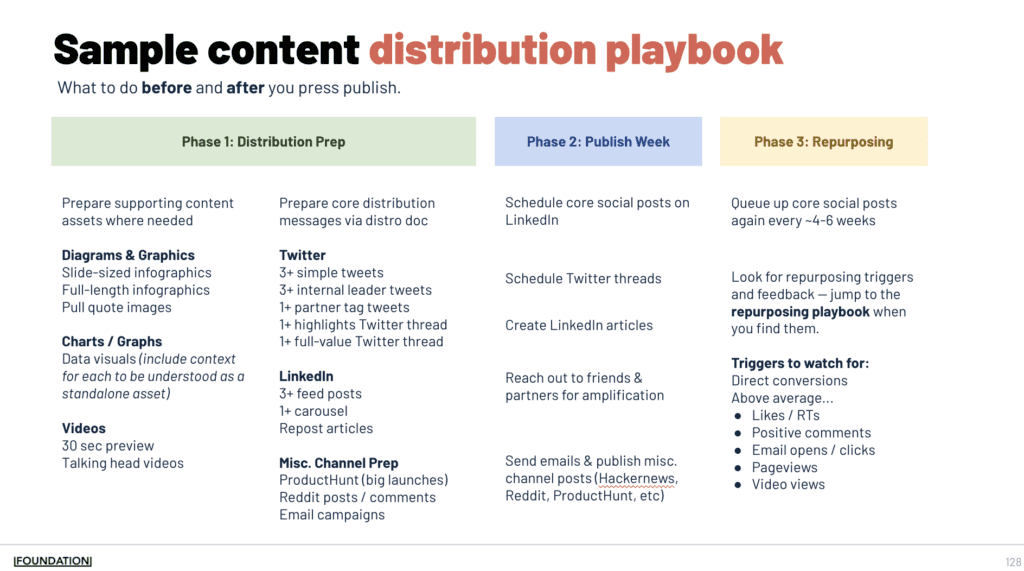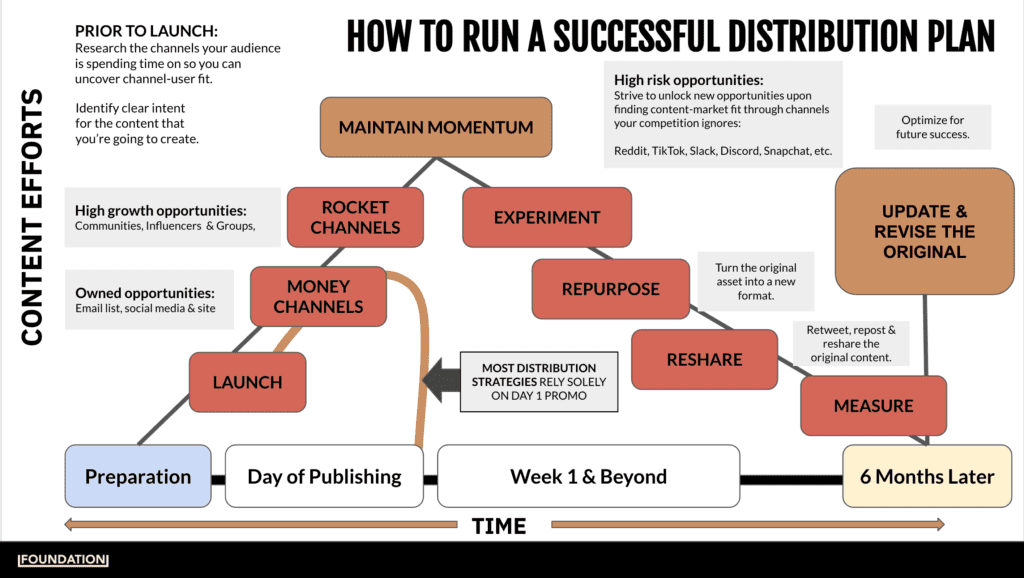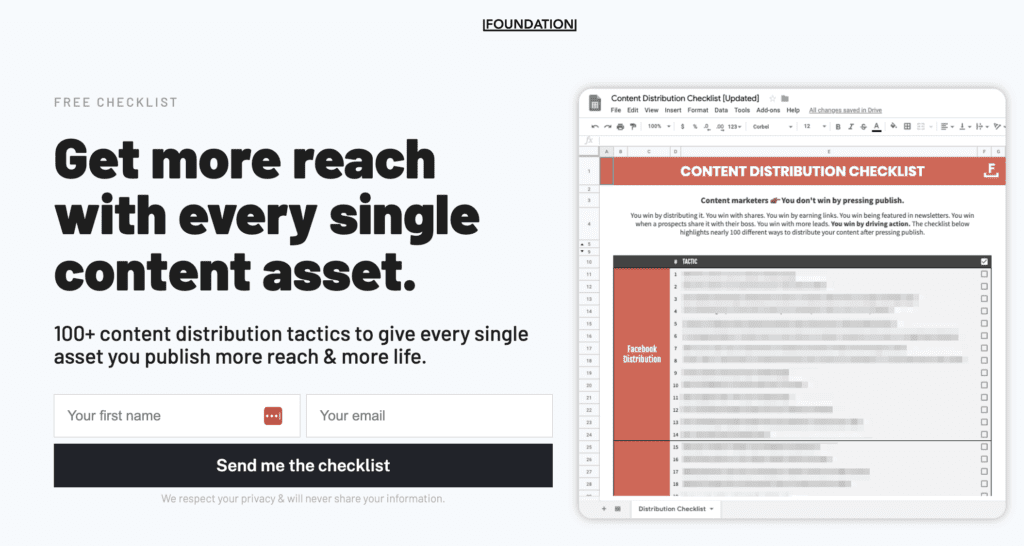What is Content Distribution?
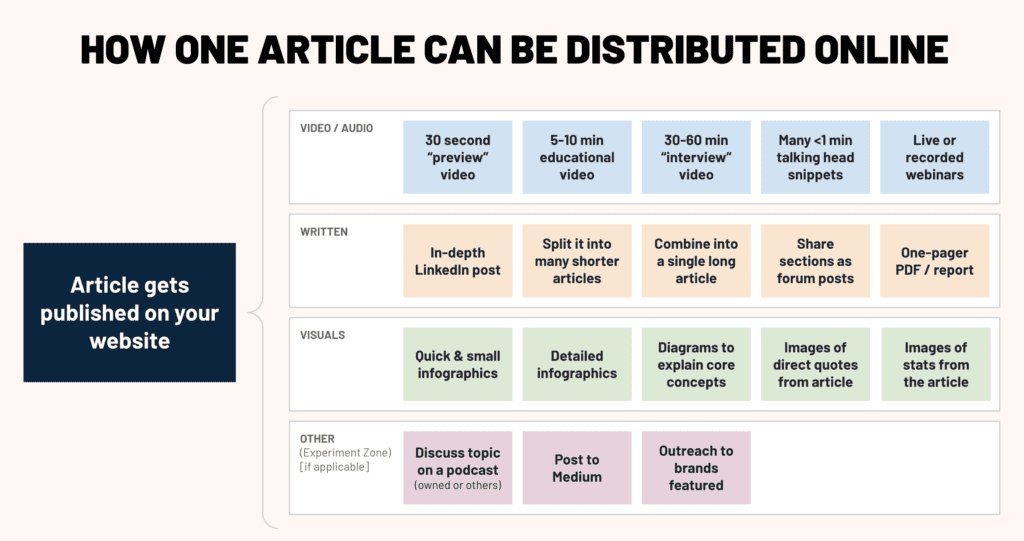
The goal is to attract, engage, and convert your target audience by delivering valuable and relevant content to them right where they are. This can include social media, email newsletters, guest blogging, paid ads, sales teams and more.
The overarching channels in which content can be distributed are Owned Channels, Earned Channels and Paid Channels.
Let’s dive into each of these:
 Owned channels
Owned channels
Owned channels refer to the platforms that your brand has complete control over, such as your website, blog, and social media pages. These channels are essential for building a strong online presence and establishing your brand’s voice. It is crucial to regularly create and share high-quality content on your owned channels to keep your audience engaged and drive traffic back to your website.
Here are a few examples of owned channels:
- Your website
- Your blog
- Your products in-app chat
- Your email list
Earned channels
Earned channels, also known as organic channels, are the platforms where your audience shares or talks about your content on their own accord. This can include social media mentions, backlinks from other websites, and word-of-mouth recommendations.
Achieving earned media requires consistently producing valuable and shareable content that resonates with your audience. It is a testament to the quality of your content and community.
Here are a few examples of earned channels:
- Digital PR
- Social mentions
- Dark social
- Convos in Slack
- Organic SEO
Paid channels
Paid channels refer to the platforms where you pay to distribute your content to reach a wider audience.
This could include platforms such as Google AdWords, social media advertising, sponsored content, and influencer marketing. The major advantage of paid channels is that they offer targeted reach. You can select specific demographics, locations, and user behaviors to ensure your content is seen by the most relevant audience.
However, they require a continuous investment, and their effectiveness is directly proportional to the budget allocated. Regardless, when used strategically and in conjunction with owned and earned channels, paid channels can significantly amplify your content’s reach and impact.
Here are a few examples of earned channels:
- PPC
- Social Ads
- Sponsorship
- Influencer Ads
Why is content distribution important?
Content distribution is crucial for the success of your content marketing strategy because it allows you to maximize the reach and impact of your content.
With the ever-increasing amount of content being produced and shared online, simply creating high-quality content is no longer enough. It needs to be actively distributed to stand out among the competition and reach its intended audience.
The best content marketing engines embrace four key elements to drive growth:
Research. Creation. Distribution. Optimization.
Here’s a framework that marketers can use to understand the model at large:
You can see that the “distribution” part of the framework is quite extensive covering everything from sales and Reddit to Facebook and LinkedIn.
This is intentional. Content distribution is RARELY considered but is SO important for marketing teams to consider.
By utilizing a diverse range of distribution channels, you can attract new audiences, engage with existing ones, and drive conversions.
This, in turn, helps to increase brand awareness, authority and generate leads and customers.
Content distribution also includes the act of repurposing of your content. By repurposing your content across different platforms and formats, you can reach a wider audience while saving time and resources on creating entirely new content.
Types of Content You Can Distribute
When evaluating platforms for content distribution, start by taking stock of your current content assets and consider adding new types of content to enhance your offerings. This comprehensive list should include content assets like:
- Existing blog articles
- Instructional guides
- Whitepapers
- Landing pages
- Podcast episodes
- Engaging video content
- Detailed research papers and studies
- In-depth resources such as pillar pages
- Customer success stories and case studies
- Interactive webinars and live Q&A sessions
- User-generated content and testimonials
- Social media posts and stories
- Thought leadership interviews
- Presentations & keynotes from events
- Industry trend reports and market analysis
- Interactive tools or calculators
- Online courses or educational series
- Informative infographics
- Handy checklists
- Published Ebooks
Identify which content assets are performing the best for your organization and use that to determine which pieces you want to focus on. Once you have clarity on which content assets should be distributed, it’s time to understand the channels available and let these content assets spread.
What are the best content distribution channels?
The most important question to ask before embracing content distribution is:
- Where does your audience spend time?
It’s the answer to this question which will lead you to the best content distribution channel.
The distribution channels that make sense for a B2B SaaS company selling to scientists might be LinkedIn while an eCommerce brand selling water bottles to High School students might want to consider Instagram or TikTok.
This is why conducting research is so important for a marketing team looking to identify the right content distribution channel for them to embrace. Here’s a few things to consider when looking at different distribution channels:
- Is your target audience using this channel?
- Is your target audience actively engaged on this channel?
- Does your team have experience distributing content on this channel?
- Does your team have the ability to create content for this channel?
- Can this channel drive ROI for your business?
- Are your competitors on this channel?
Based on these answers you should be able to determine what channel makes the most sense for you.
What channels should brands use for content distribution?
Here are some of the most popular distribution channels:
- Social media marketing
- Email marketing
- Search engine marketing
- Video content distribution
- Audio content distribution
- Sales outreach and activation
- Community management
- Sponsorships & influencers
- Forums and online networks
Here’s a simple playbook that you can use AFTER pressing publish on a piece of content:
Channel 1: Email Marketing
Email marketing is an incredibly effective content distribution channel.
Email distribution is when a content asset you created is plugged in either your own or another newsletter.
Here’s an example in Morning Brew:

It’s a great way to keep them updated on your latest blog posts, white papers, webinars, or any other content you produce.
It’s also a great way to reach new people in the form of sponsorship.
The key to successful email distribution lies in promoting valuable content.
The purpose of email marketing is not only to promote your content but also to provide useful information or insights that benefit the receiver. This increases the likelihood of your emails being opened, read, and acted upon. Additionally, email marketing offers advanced targeting options. You can segment your audience based on various criteria such as their interests, behaviors, and content preferences, and send them personalized content that they’re most likely to engage with. This can significantly improve your content’s reach, engagement, and conversions.
All that said:
It’s crucial to respect your audience’s inbox and not to overwhelm them with too many emails.
Striking a balance between being informative and being intrusive is essential.
In a study conducted by the Content Marketing Institute, email was the second most popular organic distribution channel for B2B brands with 87% of marketers selecting it as their channel of choice:
Email marketing as a distribution channel can pay significant dividends. Here are a few tactics you might find within email marketing strategies for content distribution that work well:
- Newsletter: A newsletter is an email that is regularly sent out to subscribers, containing updates, news, and other information. It can be a great way to distribute your content as you can include links to new blog posts, social media updates, and other relevant content in each issue. Make sure to keep your newsletters visually appealing with engaging headlines and images.
- Drip Campaigns: Drip campaigns are a series of emails sent out over time based on specific triggers or actions taken by the subscriber. For example, when someone signs up for your email list, they could receive a welcome email followed by a series of emails introducing them to your brand and guiding them towards more of your content.
- Cold Outreach: Cold outreach emails are typically used for lead generation and sales purposes. These emails are sent to potential customers who have not previously engaged with your brand. The key to successful cold outreach is personalization and providing valuable information or offers that will catch the recipient’s attention.
- Automated Emails: Automated emails are pre-written messages that are triggered by certain actions or events, such as a purchase abandoned cart, or performing a search on an e-commerce site. These types of emails can help keep customers engaged and informed about their interactions with your brand, while also potentially driving sales.
- Email Signature: An email signature is a block of text that is automatically inserted at the end of every email you send. It typically includes your name, job title, company logo, and contact information. Email signatures can be a great way to distribute your content by updating it with a “PS: Read this” and linking to your latest piece.
Channel 2: Search Engine Optimization
Search Engine Optimization (SEO) is an indispensable content distribution channel.
Most people turn to search engines like Google to find information, making SEO a significant player in driving traffic to your content.
SEO involves optimizing your on-site content with relevant keywords, meta descriptions, and title tags that your target audience is likely to search for. This aids in improving your content’s visibility and ranking on search engine result pages (SERPs), making it easier for your audience to discover. In addition to that, SEO is about optimizing off-site factors like the total number of backlinks that your page has driving to it.
The goal with SEO is to create content & distribute that is aligned with your ideal customers search intent.
If you achieve this… You can generate traffic directly from Google.
Here’s a run down on some of the most critical SEO factors to keep in mind:
SEO is not just about attracting traffic, but about attracting the right traffic.
When done properly, SEO can attract a targeted audience who are actively seeking the information, product, or service you provide, increasing the likelihood of engagement and conversion.
You can easily get started with SEO using various SEO tools for beginners that can help you optimize your website for search results and provide relevant keyword opportunities.
While SEO might not drive immediate results like some paid channels, it is a long-term investment that can yield substantial and sustainable results. Its ability to attract a relevant audience and improve your content’s organic reach makes it a vital component of your content distribution strategy.
Channel 3: Social Media Channels
Social media platforms are a powerful medium for content distribution.
With billions of users worldwide, they provide a vast and diverse audience for your content. Social media networks like Facebook, Instagram, Twitter, LinkedIn, and Pinterest each have their unique features and user demographics, allowing you to target your content to the most relevant audience.
Facebook, for instance, is excellent for sharing various types of content, such as blog posts, videos, photos, and events, and has a broad user base. Instagram is highly visual, making it ideal for sharing images and short videos, especially for lifestyle, fashion, food, or other visually-driven brands.
Twitter (now known as X) is perfect for short, timely, and engaging content and is excellent for news, updates, and trending topics.
LinkedIn is the go-to platform for B2B content, professional networking, and industry-related content.
Pinterest, on the other hand, is great for sharing visual content that drives back to your website, particularly for DIY, fashion, food, and design content.
This doesn’t even cover it all.
Instagram. TikTok. Reddit. All count as social media channels worth considering just the same for distribution.
One of the great benefits of social media is the opportunity for your content to be shared and spread organically. A single share by a member of your audience can exponentially increase your content’s reach and visibility.
One thing that is important to keep in mind when using these channels is that each social media platform requires a unique approach. The content, frequency, and timing of posts that work on one platform may not work on another. Understanding each platform’s characteristics, along with your audience’s behavior on that platform, is crucial for a successful social media strategy.
Channel 4: Video Content
Video marketing, particularly through platforms like YouTube, has exploded in popularity in recent years, making it a top choice for content distribution.
YouTube, being the second largest search engine after Google, offers an unprecedented potential audience for your content. Videos are incredibly versatile and can be used to demonstrate products, educate customers, share customer testimonials, or provide behind-the-scenes glimpses into your company. With AI video creation tools, this versatility is taken even further, as these platforms can automatically generate polished videos from text or other assets. This allows businesses to produce high-quality videos at scale, without needing extensive time or resources
The engaging nature of videos makes them highly shareable across various social media platforms, thereby increasing your content’s reach. YouTube also allows for the integration of SEO practices with options for titles, tags, and descriptions. Maintaining a consistent uploading schedule and ensuring high-quality, engaging content is key for success on YouTube.
One of my favorite parts of video content for distribution is how easily re-packagable and re-purposable a video can be.
Here’s a simple video distribution plan that gives you a glimpse into what is possible:
Video can be turned into audio.
Video can be turned into blog posts.
Video can be turned into status updates.
Video can be remixed into a ton of different assets that can be reshared and repackaged in a wide range of different formats and styles.
Don’t sleep on your greatest hits.
That podcast your CEO was on that drive a ton of traffic and leads — Repurpose it.
That presentation from a conference in 2020 — Repurpose and distribute it.
That fireside chat you were on and dropped some amazing insights — Repurpose and distribute it.
One of the questions I often ask is:
What is the best All-In One Video + Podcasting Tool?
My answer?
Descript.
If you’re not familiar with Descript, it’s a software that allows you to edit videos and podcasts all in one go. One of my favorite parts of Descript is that you can edit videos and the words that are said within them all in the matter of seconds just like you would if you were editing a doc:
 Channel 5: Podcast Networks
Channel 5: Podcast Networks
Podcasts are a rapidly growing content distribution channel.
According to Demand Sage & Pew Research Center, there are over 5 million podcasts globally, with over 70 million episodes between them.
That’s a lot of content. But the distribution opportunity exists here:
There are 464.7 million podcast listeners.
Podcasts offer a unique way to share content, engage an audience, and build brand authority. Podcasts create a more personal connection with your audience as they offer the convenience of consuming content on the go, whether during a commute, at the gym, or while working. You can leverage podcasts to distribute content in a few different ways:
- Content Repurposing: You can turn long form content into a podcast and then repackage that podcast into other formats.
- Content Referencing: You can plug your content on a podcast (your own or someone elses) and drive traffic to those assets.
- Content Amplification: You can sponsor podcasts that are relevant to your target audience and generate revenue on the back of it.
Popular podcast networks like Spotify and Apple Podcasts allow your content to reach a vast audience.
Regularly releasing high-quality, relevant, and engaging podcast episodes can help build a loyal subscriber base. One of my favorite strategies for content distribution on podcasts is making a subtle (or not so subtle) reference to a content asset that you created and including a link to it in the show notes.
By featuring guests from your industry, you can also tap into their existing audience, expanding your reach when they retweet or promote your content.
Distribution Idea: AI For Podcasting
One of the most fascinating technologies of this lifetime is the rise of Generative AI. Most recently, audio AI has started to show signs of disruption in industries like podcasting and voice acting. Tools like ElevenLabs make it easier for marketers to create audio content on the back of AI.
Here’s an episode of Create Like The Greats where we dive into this topic in detail:
Channel 6: Influencer Marketing
Influencer marketing represents a modern form of content distribution where you collaborate with influencers in your industry to promote your content to their followers.
Influencers, with their loyal and engaged followers, can dramatically increase your content’s visibility and credibility. This form of marketing works well because it leverages the trust and respect that influencers have built with their audience.
The key to successful influencer marketing is to partner with influencers who have a follower base that matches your target audience. It’s also essential to allow influencers the creative freedom to present your content in a way that resonates with their audience – after all, they know their followers best. While influencer marketing can require a substantial investment, it can bring significant returns when executed strategically.
In conclusion, influencer marketing can play a pivotal role in expanding the reach and impact of your content, making it a worthwhile addition to your content distribution strategy.
Best practices for creating your content distribution strategy
The best practices for content distribution start with a scalable distribution strategy.
You need to start by understanding your audience then understand your capabilities.
Once you understand those, develop a content distribution playbook that you can utilize time and time again. Here’s a sample of what this could look like:
In the sample above, the playbook outlines three key moments in the distribution process:
Phase 1: Distribution Preparation
It’s during this phase where you prepare your content assets for amplifcation and distribution.
Phase 2: Publish Week
It’s this week in which you start to amplify your content on a wide range of channels.
Phase 3: Content Repurposing
The final step in the process is to maximize the content that is working and repurpose it into new things.
This is what a beginner distribution playbook can look like. If you’re looking for a more advanced distribution engine then this graphic showcases how a successful distribution plan can be run and optimized for six months or more:
In this video from Moz, I dive deep into how brands can repurpose their content and get even more out of pieces that they have published:
Now that we’ve explored the importance of content distribution and the most effective channels available, let’s delve into the best practices for creating a robust content distribution strategy. But before we do that.
Here’s a resource that you might find value from:
The Content Distribution Checklist: Over 100 Ways To Make Your Content Spread
Embracing a content distribution checklist will maximize your results.
But before you embrace that. Here are a few best practices to remember when developing your content distribution strategy.
Content Distribution Best Practices:
Know your audience
Before deciding on which channels to distribute your content, it’s crucial to understand your target audience.
Conducting thorough research into their demographics, behaviors, preferences, and interests will help you determine the best channels to reach them effectively.
Tailor your content for each channel
Each distribution channel requires a unique approach. Remember that what works on one platform may not work on another. Tailor your content for each channel, considering the platform’s characteristics and your audience’s behavior on that platform.
Include a call to action
Your content should have a clear call to action (CTA) that encourages your audience to take the desired next step.
Whether it’s subscribing to your email list, downloading an e-book, or purchasing a product, including a CTA is essential for achieving your content goals.
Create a social media calendar
With multiple social media platforms to manage, it’s essential to have a social media calendar that outlines your content distribution plan. This will help you stay organized, maintain consistency across platforms, and ensure that your content is being shared at optimal times for maximum reach and engagement.
Be consistent and regular
Consistency and regularity are key to building an engaged audience.
Whether it’s posting on social media, releasing podcast episodes or videos, or sending emails, be sure to maintain a consistent schedule so that your audience knows what to expect from you.
Measure your results and adapt accordingly
Tracking the performance of your content using cross-channel marketing data is crucial.
Use analytics tools to measure metrics such as reach, engagement, conversions, and ROI. Based on these insights, make adjustments to your strategy to continuously improve and optimize your results.
Collaborate with other brands
Collaborating with other brands in your niche can be an effective way to expand your content’s reach.
By partnering with complementary businesses, you can tap into their audience and vice versa, resulting in increased visibility and engagement for both parties. Whether it’s newsletter swaps or shout outs exchanged for shout outs — this can drive results.
Set clear goals and KPIs
It’s key to set clear goals and key performance indicators (KPIs) for your content distribution strategy.
This will help you measure the success of each channel and make data-driven decisions for future campaigns.
Use hashtags strategically
Hashtags are a powerful tool for reaching a wider audience on social media. Research relevant and popular hashtags in your niche, and strategically use them in your posts to increase visibility and attract new followers.
PRO TIP: Hashtags aren’t useful on Twitter (X) anymore but on LinkedIn they work really well.
Engage with your audience
Don’t just use social media as a platform to share content – make sure to engage with your audience through comments, likes, shares, and messages. This not only helps build relationships but also shows that you value their input and feedback.
Embrace paid distribution channels
While organic reach is amazing, utilizing paid advertising options is a guarantee for reach.
Whether it’s through Google Ads or social media – paid initiatives can boost your content’s visibility and engagement.
Platforms like Facebook, Instagram, Twitter, and LinkedIn offer various targeting options to reach your desired audience.
Distribute visual content
Visuals are highly engaging and tend to perform better on social media platforms.
Make use of high-quality images, videos, and infographics to make your content more appealing and shareable.
Wrapping Up: Create Once. Distribute Forever.
Content distribution does not adhere to a universal approach.
And in many ways… That’s what makes it so challenging to do well.
Implementing any strategy without proper planning constitutes an inefficient allocation of resources and effort. Content distribution is no different.
You need both effective execution and a well-devised strategy.
To guide you towards efficacy, consider these final pieces of advice:
- Don’t create something and assume that the job is done.
- Recognize that the distribution process lasts longer than one day.
- Embrace automation and scalable techniques for distributing content.
- Always optimize your content after it’s been distributed to keep the value high.
- Don’t let your content go live without being amplified. Promote. Promote. Promote.
And if you’re not sure how to do that.
I’m hopeful that you will bookmark this guide and come back to it for years to come.

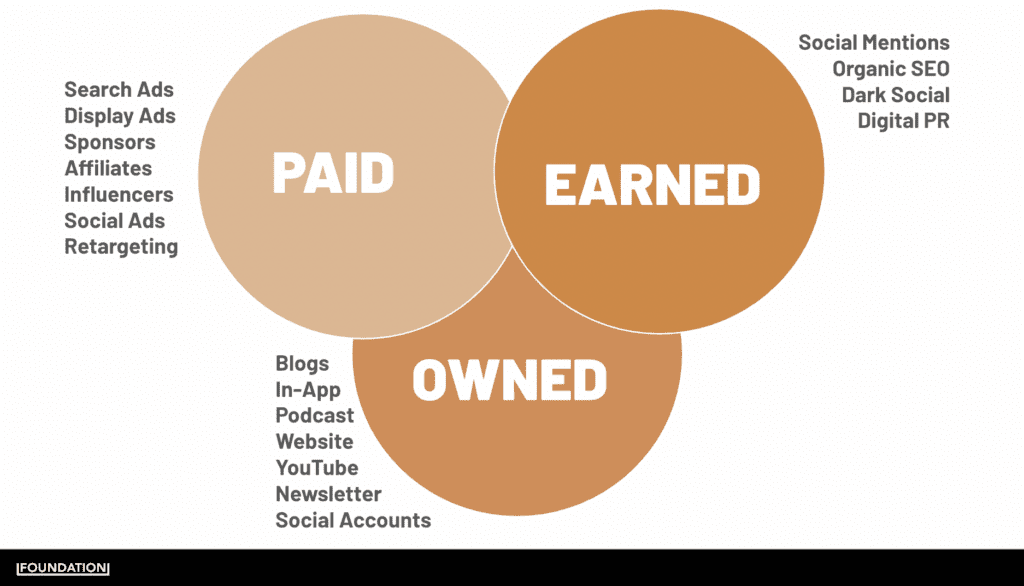 Owned channels
Owned channels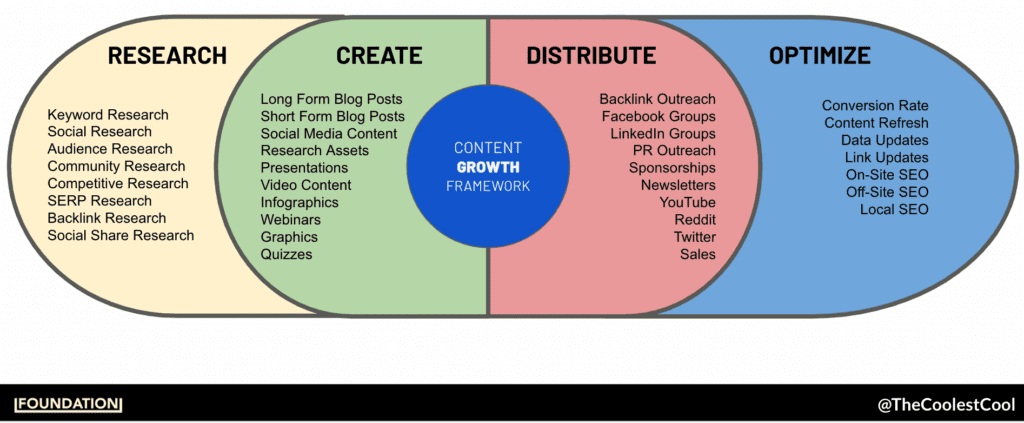
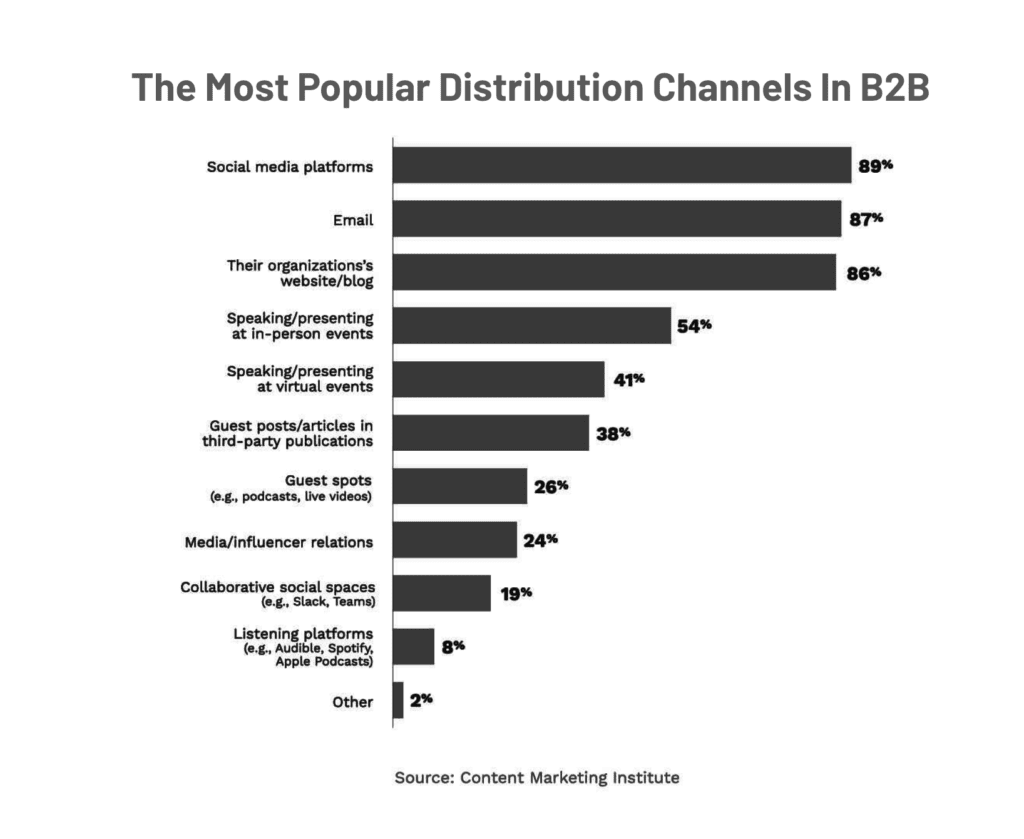
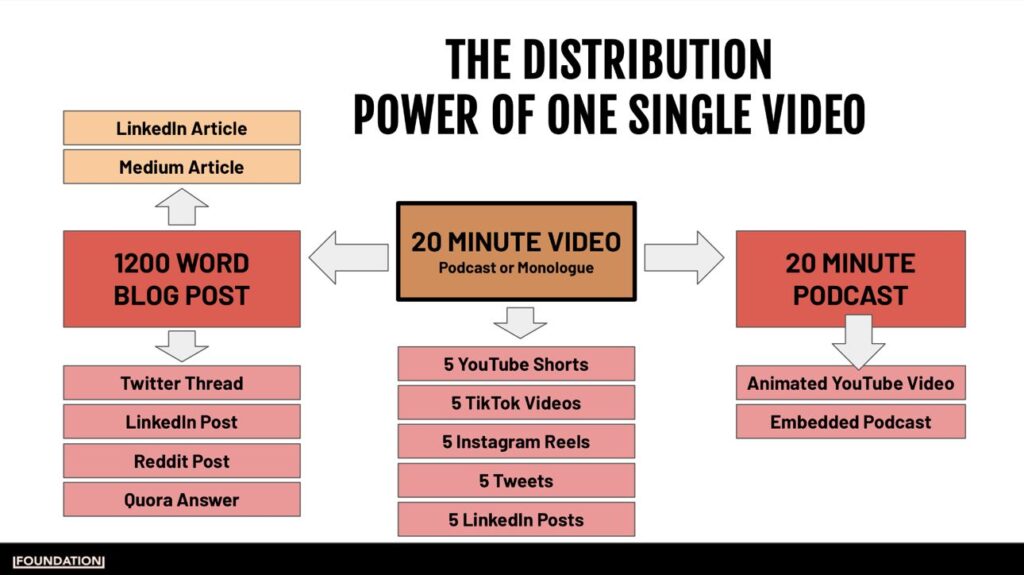
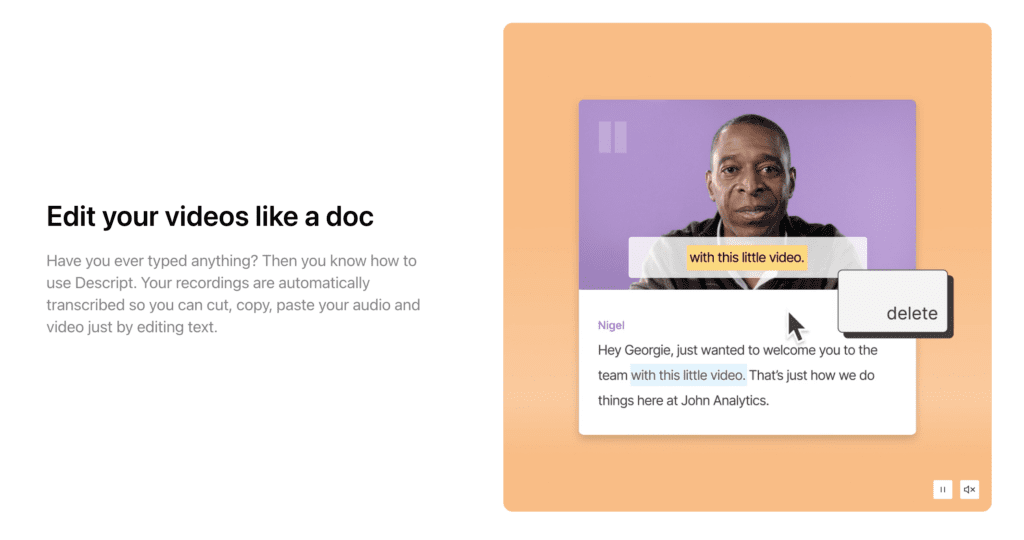 Channel 5: Podcast Networks
Channel 5: Podcast Networks